Fragments
Once there was a box. Inside the box was a board, and inside the board was a chip. Inside the chip was a carrier, and on that carrier was a die. And when the die came off the carrier it broke, and the pieces looked like this:
More pretty pictures below.
The box was a 1983 IBM 5291 Display Terminal. It’s a block display terminal for interacting with System/36 machines over twinax. It’s pretty useless as is.
The board is the logic board from the terminal, and the chip is unidentifiable. IBM insisted on putting its own internal part numbers on every component on the board (if you happen to know why, please leave a comment!), so even the basic logic on the board is tricky to figure out.
The chip is a 72-pin PGA package, a sort of through-hole precursor to the BGA packages you see everywhere nowadays.
Popping the top off of the aluminum chip reveals the carrier board. The die appears featureless because it’s face-down– it’s a flip-chip. The bonding pads on the die have little solder balls on them which are reflowed onto the carrier. Basically, the whole package is a breakout board for a very tiny BGA chip.
Here’s a shot of a similar chip I dismantled; you can see the solder balls clearly.
Unfortunately, there’s also often a little epoxy or other bonding agent added underneath the die after the reflow step, so it’s tricky to remove the dies cleanly. I shattered this one as I took it off the carrier.
You can get a sense of how thick the silicon is compared to the active regions on these old chips. Still, these are tiny fragments– a sneeze can send them flying. Up close, though, they remind me of fragments left behind by another civilization: a teensy Rosetta Stone.
In case you’re wondering: I still have no idea what this chip was.
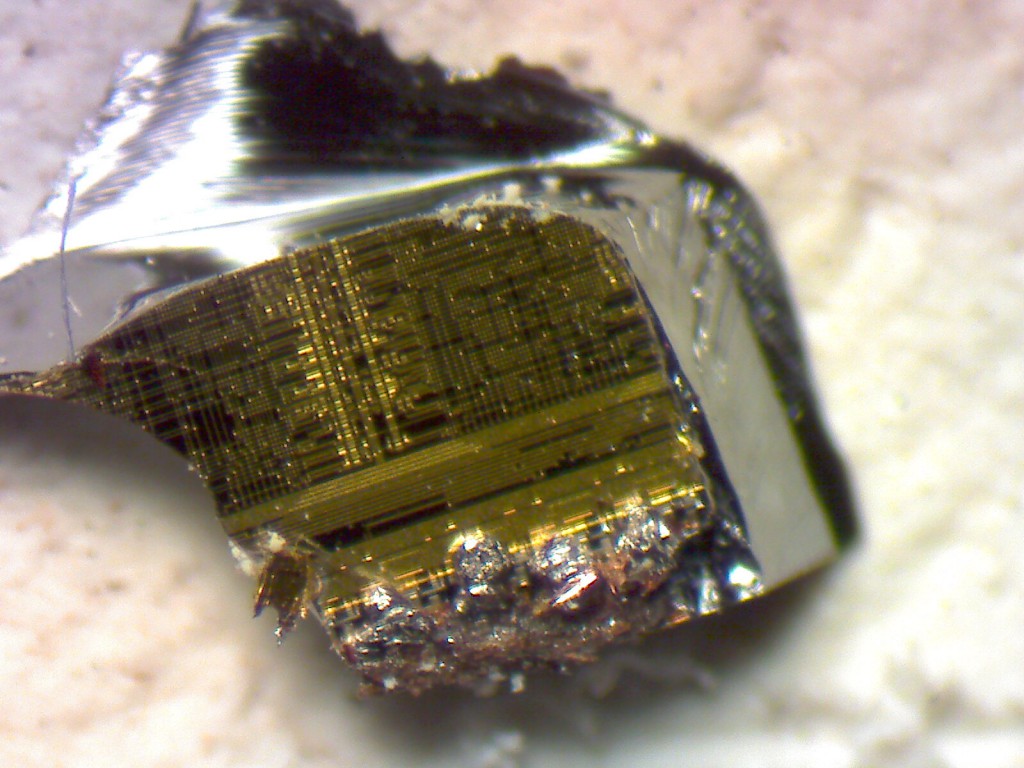
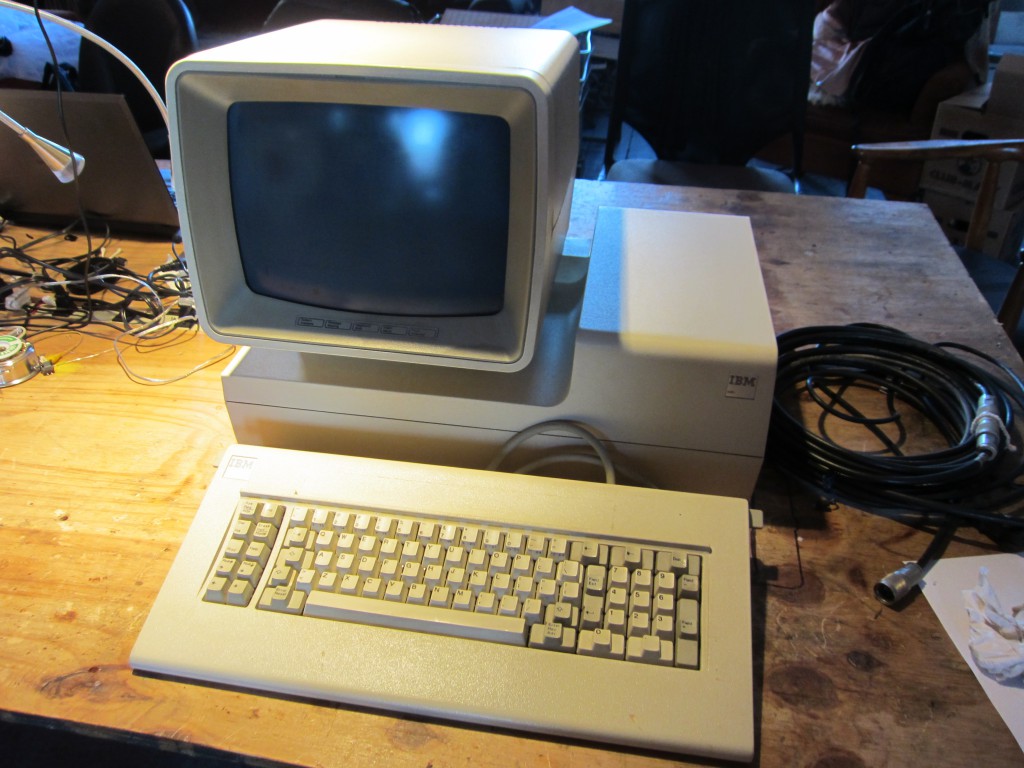
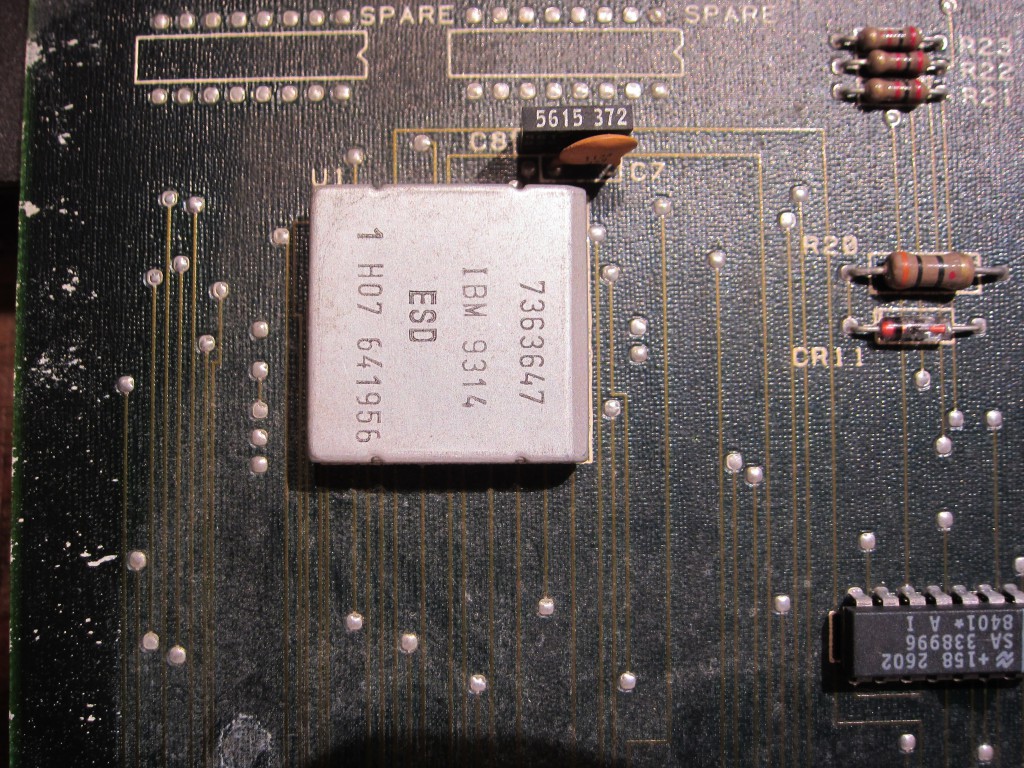
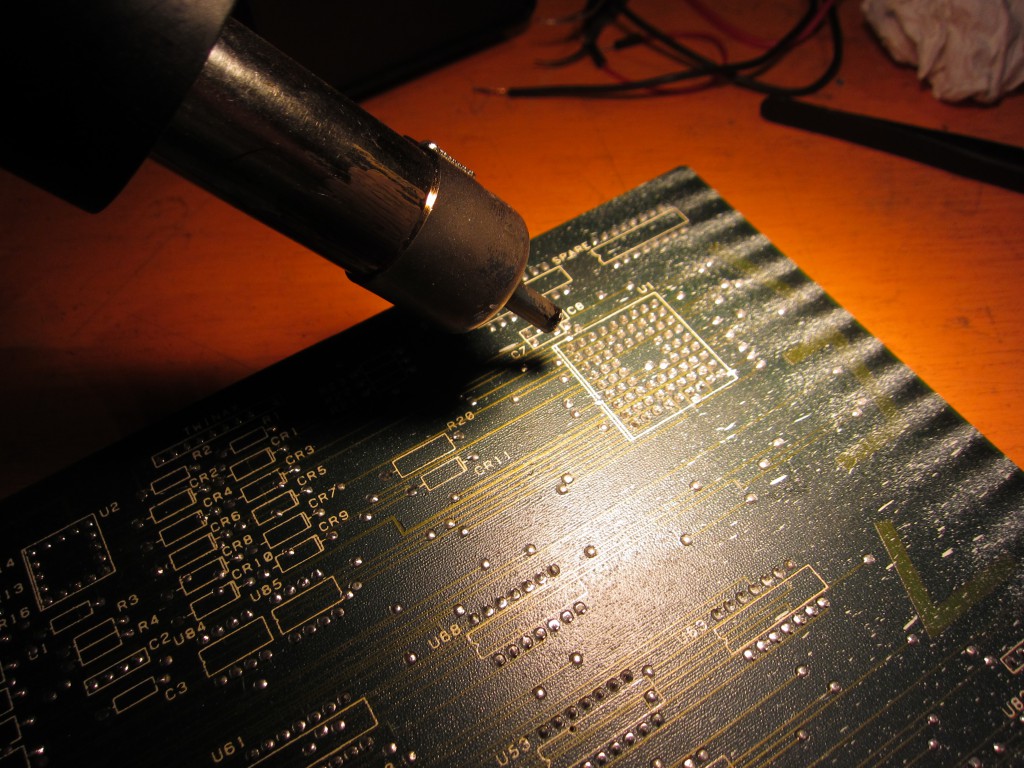
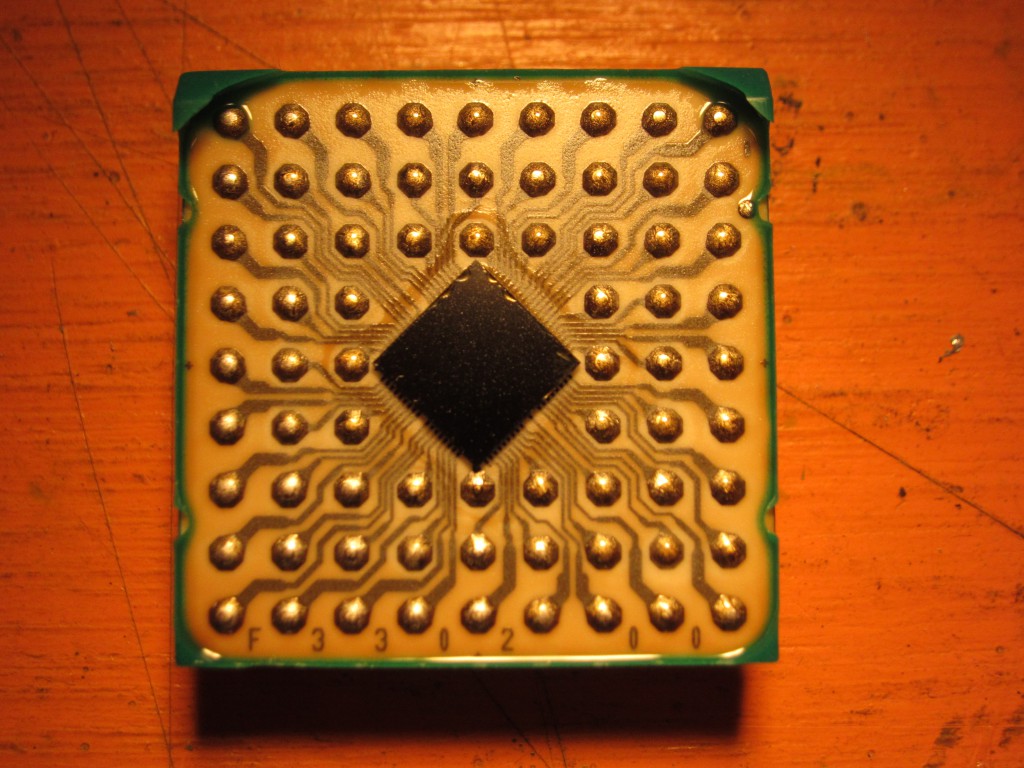
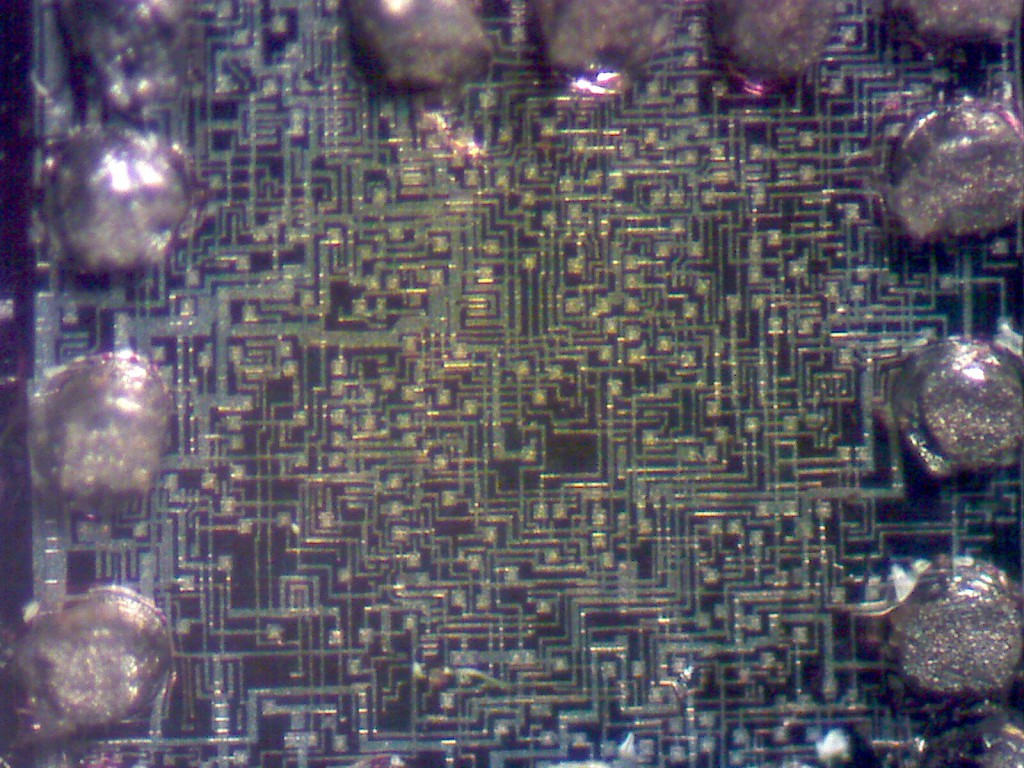
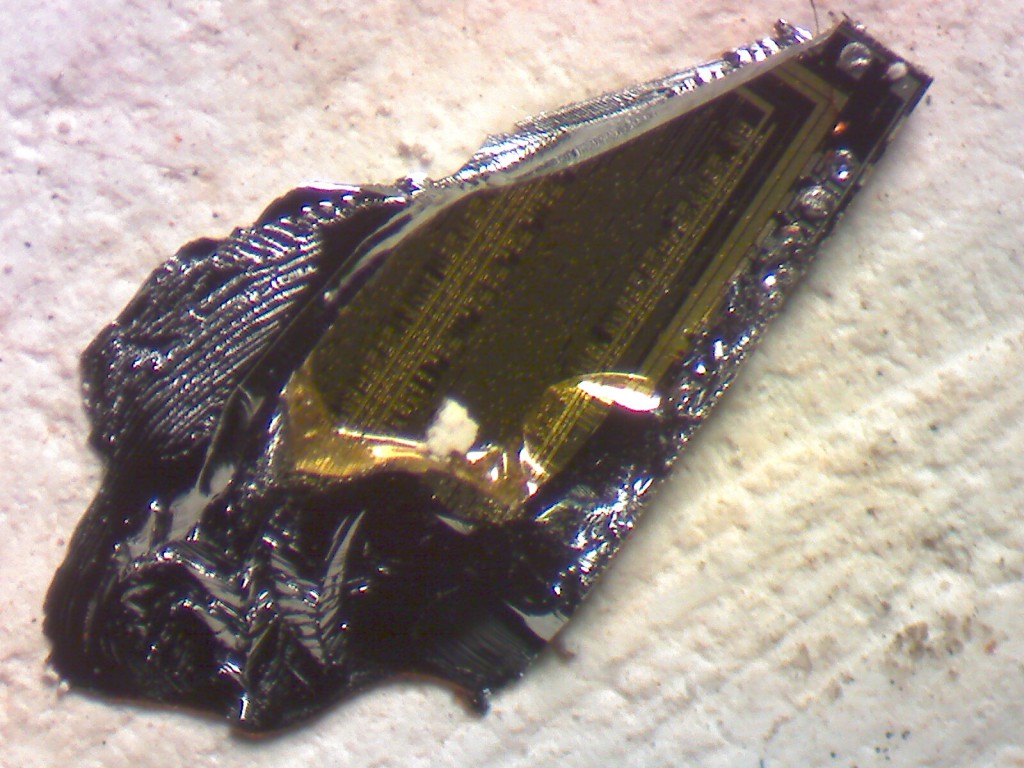

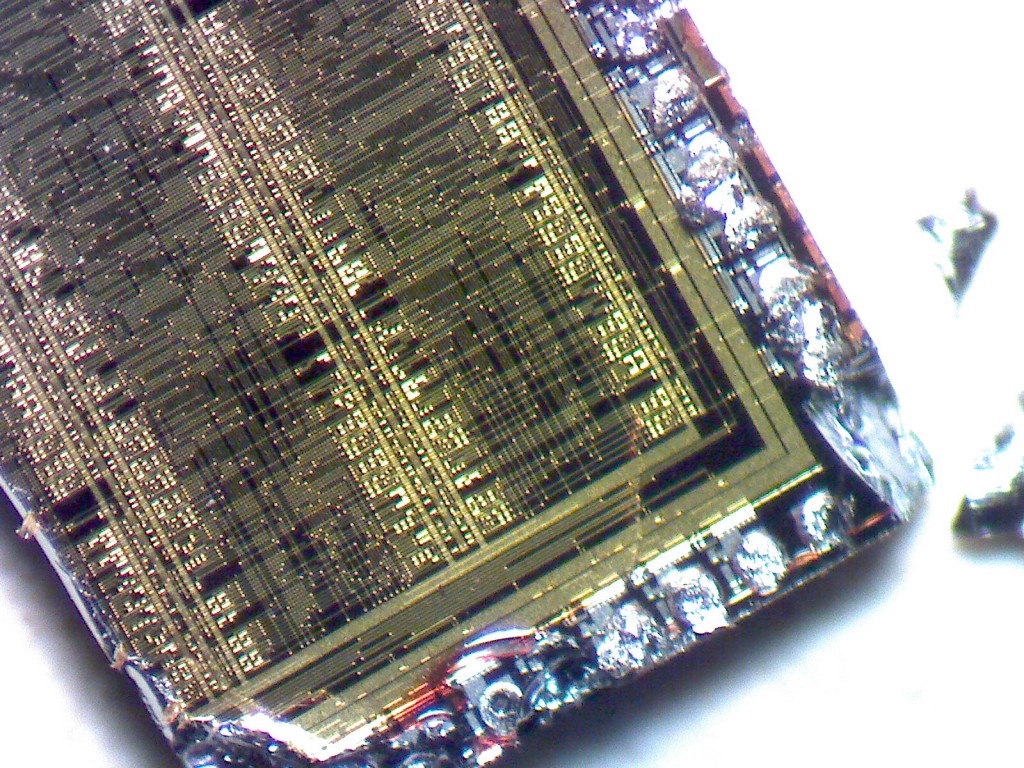
Excellent Pictures! Somehow the die and solder balls remind me of Daleks. Maybe its just the age of the technology?